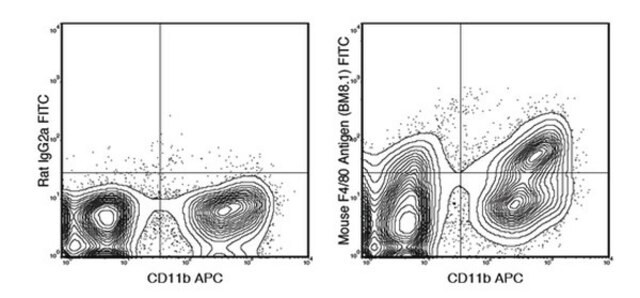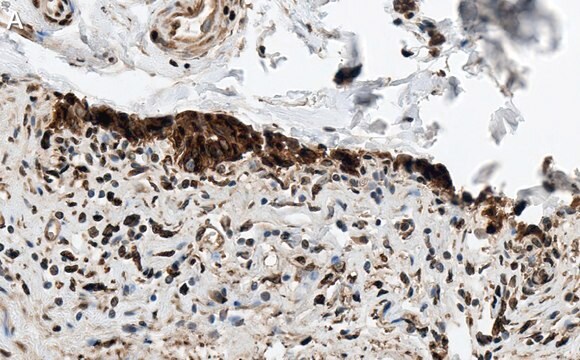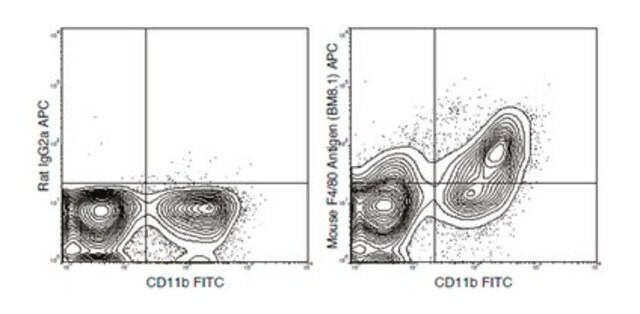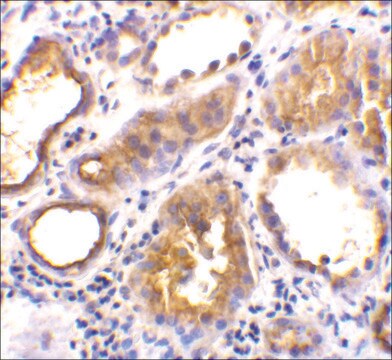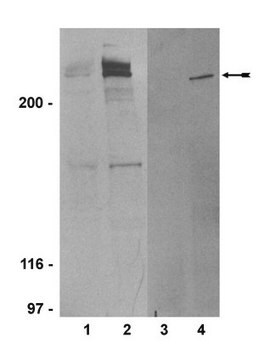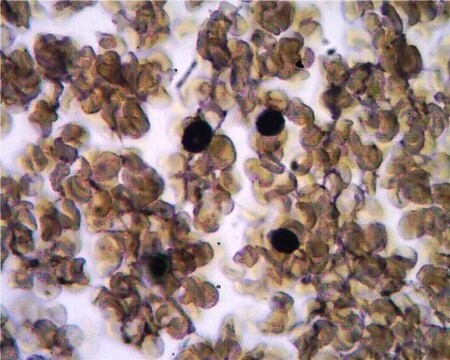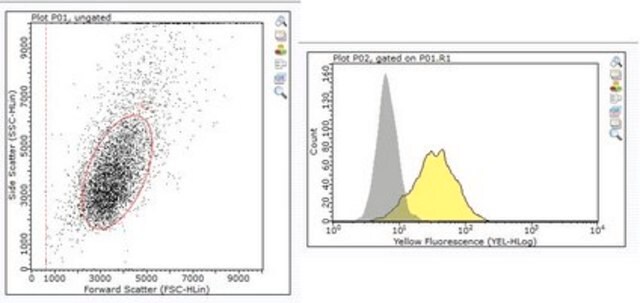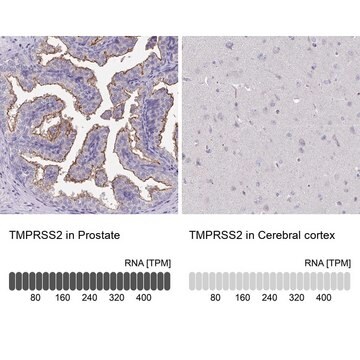MABS1955
Anti-mtHsp70 Antibody, clone JG1
clone JG1, from mouse
Synonym(e):
Heat shock 70 kDa protein 1A, Heat shock 70 kDa protein 3, HSP70.3, Hsp68, PBP74
About This Item
Empfohlene Produkte
Biologische Quelle
mouse
Antikörperform
purified immunoglobulin
Antikörper-Produkttyp
primary antibodies
Klon
JG1, monoclonal
Speziesreaktivität
human, mouse
Speziesreaktivität (Voraussage durch Homologie)
hamster (based on 100% sequence homology)
Verpackung
antibody small pack of 25 μL
Methode(n)
ELISA: suitable
immunocytochemistry: suitable
immunoprecipitation (IP): suitable
western blot: suitable
Isotyp
IgG3κ
NCBI-Hinterlegungsnummer
UniProt-Hinterlegungsnummer
Posttranslationale Modifikation Target
unmodified
Angaben zum Gen
mouse ... Hspa1A(193740)
Allgemeine Beschreibung
gradually deacetylated by HDAC4 at later stages. Its acetylation enhances its chaperone activity and determines whether it will function as a chaperone for protein refolding or degradation by controlling its binding to co-chaperones HOPX and STUB1. The acetylated form and the non-acetylated form are shown to bind to HOPX and STUB1, respectively. It contains four ATP-binding regions and its N-terminal nucleotide binding domain (NBD; ATPase domain) is responsible for binding and hydrolyzing ATP. Its substrate binding domain (SBD) is localized to the C-terminal region. When ADP is bound in the NBD, a conformational change enhances the affinity of the SBD for client proteins. (Ref.: Green, JM et al. (1995). Hybridoma 14(4); 347-354).
Spezifität
Immunogen
Anwendung
Zelluläre Signaltransduktion
Immunocytochemistry Analysis: A representative lot detected mtHsp70 in Immunocytochemistry applications (Green, J.M., et. al. (1995). Hybridoma. 14(4):347-54; McCormick, A.L., et. al. (2005). J Virol. 79(19):12205-17).
Immunoprecipitation Analysis: A representative lot immunoprecipitated mtHsp70 in Immunoprecipitation applications (Green, J.M., et. al. (1995). Hybridoma. 14(4):347-54).
ELISA Analysis: A representative lot detected mtHsp70 in ELISA applications (Green, J.M., et. al. (1995). Hybridoma. 14(4):347-54).
Western Blotting Analysis: A representative lot detected mtHsp70 in Western Blotting applications (Green, J.M., et. al. (1995). Hybridoma. 14(4):347-54).
Qualität
Western Blotting Analysis: 1:500 dilution of this antibody detected mtHsp70 in MCF7-10A cell lysate.
Zielbeschreibung
Physikalische Form
Lagerung und Haltbarkeit
Sonstige Hinweise
Haftungsausschluss
Sie haben nicht das passende Produkt gefunden?
Probieren Sie unser Produkt-Auswahlhilfe. aus.
Lagerklassenschlüssel
12 - Non Combustible Liquids
WGK
WGK 2
Flammpunkt (°F)
Not applicable
Flammpunkt (°C)
Not applicable
Analysenzertifikate (COA)
Suchen Sie nach Analysenzertifikate (COA), indem Sie die Lot-/Chargennummer des Produkts eingeben. Lot- und Chargennummern sind auf dem Produktetikett hinter den Wörtern ‘Lot’ oder ‘Batch’ (Lot oder Charge) zu finden.
Besitzen Sie dieses Produkt bereits?
In der Dokumentenbibliothek finden Sie die Dokumentation zu den Produkten, die Sie kürzlich erworben haben.
Unser Team von Wissenschaftlern verfügt über Erfahrung in allen Forschungsbereichen einschließlich Life Science, Materialwissenschaften, chemischer Synthese, Chromatographie, Analytik und vielen mehr..
Setzen Sie sich mit dem technischen Dienst in Verbindung.